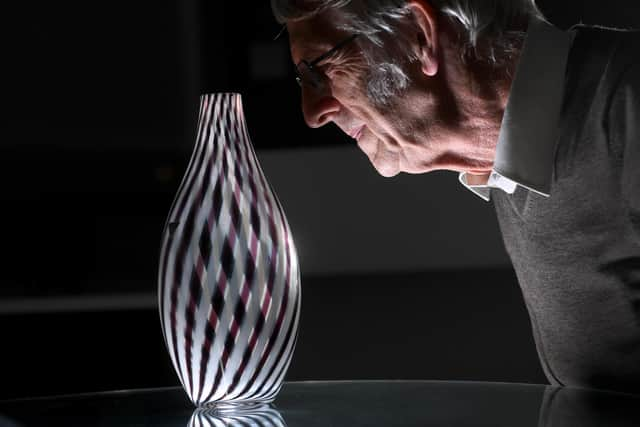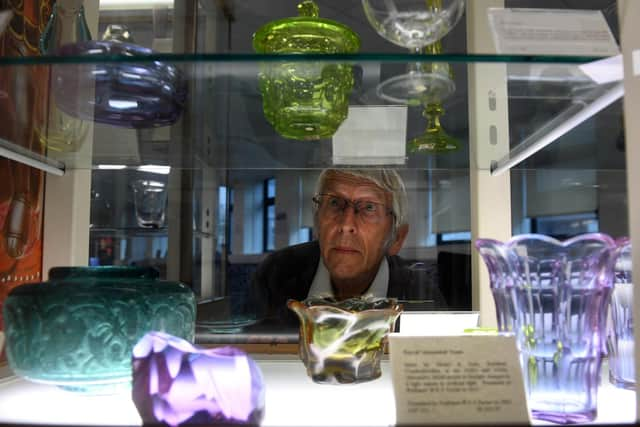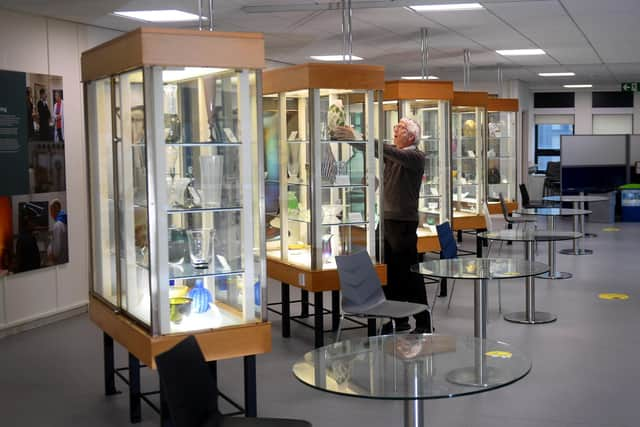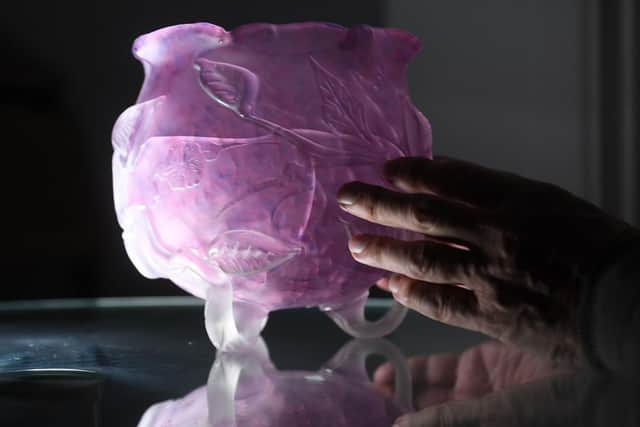Shining a light on Yorkshire's glassmaking history from ancient kilns to crafted wedding dresses in global festival
As preparations begin for the world's biggest festival of its kind in the UN's International Year of Glass, those links in history are to be gloriously explored.
From a key founder of glass research who created a blue-fibred wedding dress for his bride-to-be, to the tale of Western Europe's oldest surviving furnace, it shines a spotlight anew on the story of Yorkshire's industrial heritage which survives to this day in successful and artistic works.
Advertisement
Hide AdAdvertisement
Hide AdFor John Parker, emeritus professor of glass science and engineering at the University of Sheffield, this is a recognition that is long overdue. First there was a Year of Light, now it is the Year of Fruit and Vegetables. Glass, he insists, is so much more fascinating.


"Glass has been a very important part of our lives for thousands of years," he said.
"If it wasn't for glass fibres, we wouldn't have phones or the internet. Think microscopes, telescopes, the tubes with vaccines in. Because you look through it, you don't always see it.
"Glass is sidelined for some reason, but there are so many strands to its story."


Advertisement
Hide AdAdvertisement
Hide AdThe International Year of Glass, under the UN's humanitarian goals around health and wellbeing, education and equality as well as sustainable futures, aims to celebrate the essential role glass has in society, and in advancing civilization throughout recorded history.
Led by Alicia Durán of the International Commission on Glass, some 80 countries have already expressed an interest, with a launch to be held in Geneva and closing in Japan.
Prof Parker, regional chair for England, is helping to coordinate major museum exhibitions, school visits, trade fairs and conferences. It all links back to Sheffield University, he said.
It was here that William Earnest Stephen (WES) Turner, a chemist and pioneer, first founded the Society of Glass Technology, as well as launching the Turner Museum of Glass in 1943.


Museum
Advertisement
Hide AdAdvertisement
Hide AdWidely recognised as being the most knowledgeable of his era, Turner is also known for his bridal design. It was he who, at a time when clothing coupons were short, famously created a blue glass gown from fibres for his bride-to-be, artist and engraver Helen Nairn Munro.
"The story is she would have been happy with a necklace or a broach, and it was Turner who was the one who went the whole hog," mused Prof Parker.
"It's not ultimately a good news story - I think the dress proved uncomfortable to wear.


"It is such an exciting example of what goes on," he added. "Things are happening throughout the whole of the UK. It's all really because of Turner. Almost everywhere you go in the world, you will find glass links to Turner and Sheffield University."
Exhibitions and events
Advertisement
Hide AdAdvertisement
Hide AdAs part of the celebrations, there will be glass exhibitions at the University of Leeds, potential for a major project at the Henry Moore Institute, and opportunities to explore modern-day production and workshops.
One project could centre around a brick kiln near the M1 parkway at Sheffield, that survives as the oldest glass furnace in Western Europe, and was built under a tale of family feuds centuries ago.
The Catcliffe Kiln, owned by the Fox family, was created under stipulations in a will that it must be no closer than 10 miles from the original family factory. It was built at precisely 10.3 miles.
"Like so many old buildings, it's history is fascinating," said Prof Parker. "This presents an opportunity to discover some of it, and to ensure its preservation for the next 300 years."
History
Advertisement
Hide AdAdvertisement
Hide AdProf Parker said South Yorkshire in particular, and Leeds as well, has long been an important glass making centre, while the Dearne Valley is known for its glassmaking history.
"It's part of this county's history," he said. "There were a lot of changes at the end of the 1800s under mechanisation, but prior to 1900 there were many small glass makers around.
"The history has changed a lot, but we do now have quite an important glass industry. It's not a huge industry, but an important one, for medicine, science, even the Hubble Space Telescope.
"This is about making people aware of how much of our everyday life uses glass."
Advertisement
Hide AdAdvertisement
Hide Ad_________________________________________________________________________________
Support The Yorkshire Post and become a subscriber today. Your subscription will help us to continue to bring quality news to the people of Yorkshire. In return, you'll see fewer ads on site, get free access to our app and receive exclusive members-only offers. Click here to subscribe.
